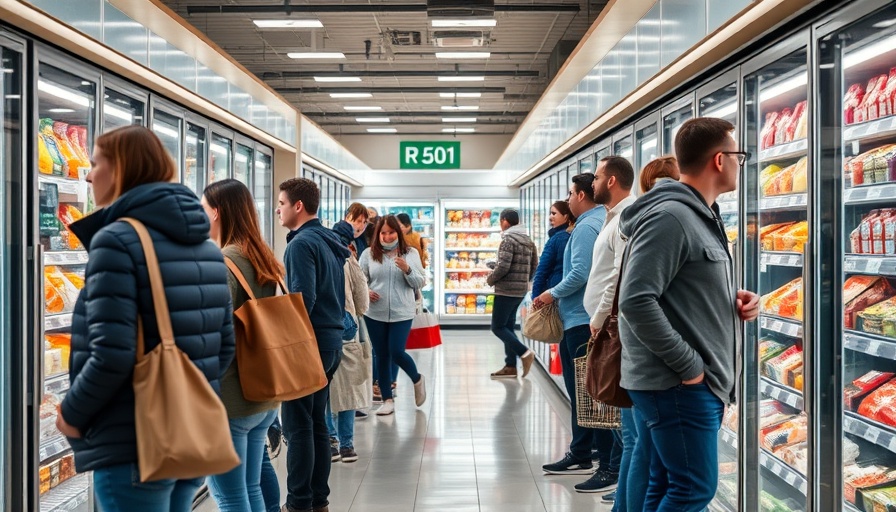
UK Food Inflation Reaches New Heights in April
The backdrop of the UK’s economic landscape has recently been marred by escalating food inflation rates, which jumped to an alarming 11-month high in April. This sharp increase not only reflects the pressures from supply chain disruptions and heightened demand but also signals to many consumers that their purchasing power is becoming increasingly squeezed.
What Fuels Food Inflation?
Several factors contribute to the current food inflation trends. Firstly, the repercussions of Brexit continue to ripple through the marketplace, imposing new costs on imports that were once available at a stable price. Additionally, rising production costs, including fuel and labor, have caused food suppliers to pass on expenses to consumers.
How This Affects Everyday Consumers
For the average consumer, the hike in food prices translates directly into more substantial grocery bills. With families constantly adjusting their budgets to accommodate rising costs, many are left grappling with tough choices—prioritizing essential items while potentially sacrificing other purchases or experiences. This persistent inflation could lead to shifts in consumer behavior, as households might seek to buy cheaper alternatives or bulk purchases to manage their expenses effectively.
The Broader Economic Implications
Food inflation doesn't exist in a vacuum. It fosters a series of broader economic implications, including influencing monetary policy. The Bank of England closely monitors these inflation rates, which can ultimately dictate interest rate decisions. Should inflation continue to rise, we might expect interest rate hikes aimed at stabilizing the economy, a change that could further affect borrowing costs for individuals and businesses alike.
Lessons from Other Markets: A Global Perspective
Looking at similar instances globally, countries like the United States have seen fluctuating food prices largely driven by supply chain constraints and changing consumer preferences. For example, the focus on e-commerce has altered the landscape of inventory management and distribution in the food sector. Such shifts could provide lessons in agility and responsiveness for UK retailers as they navigate their unique challenges.
Future Trends in Food Pricing
Experts predict that the food price inflation trend may continue throughout the year, driven by persistent supply chain issues and unstable global markets. As businesses adapt through strategies such as better supply chain transparency and digital transformation in logistics, the volatility of food prices may become more manageable, but consumers will have to brace for ongoing fluctuations in the meantime.
Strategic Insights for Consumers
In this economic milieu, consumers must remain strategic. Utilizing budgeting apps, following local food producers, and being aware of seasonal produce can empower shoppers to make informed choices. Engaging in community-supported agriculture (CSA) could also serve as a beneficial way to directly support local farmers while securing more stable produce prices.
Conclusion: The Path Ahead
The path ahead requires vigilance and adaptability from consumers, businesses, and policymakers alike. The rising food inflation rates highlight a complex web of supply and demand dynamics, and the strategies employed today will shape not only the grocery bills of tomorrow but the overall economic landscape in the months and years to come. In the face of these economic challenges, it’s crucial that stakeholders across the spectrum remain engaged, informed, and ready to respond effectively to an ever-changing market.
 Add Row
Add Row  Add
Add 



Write A Comment